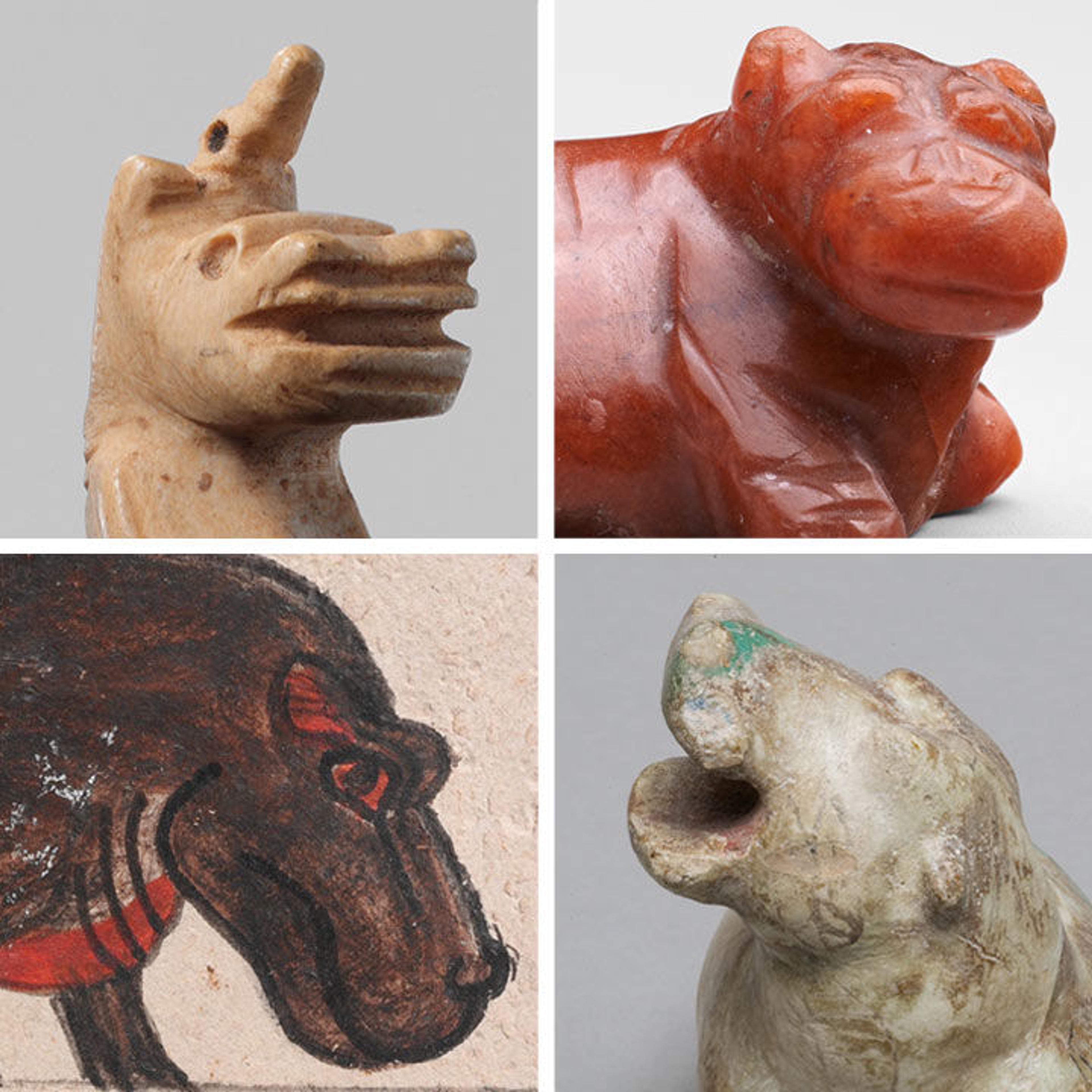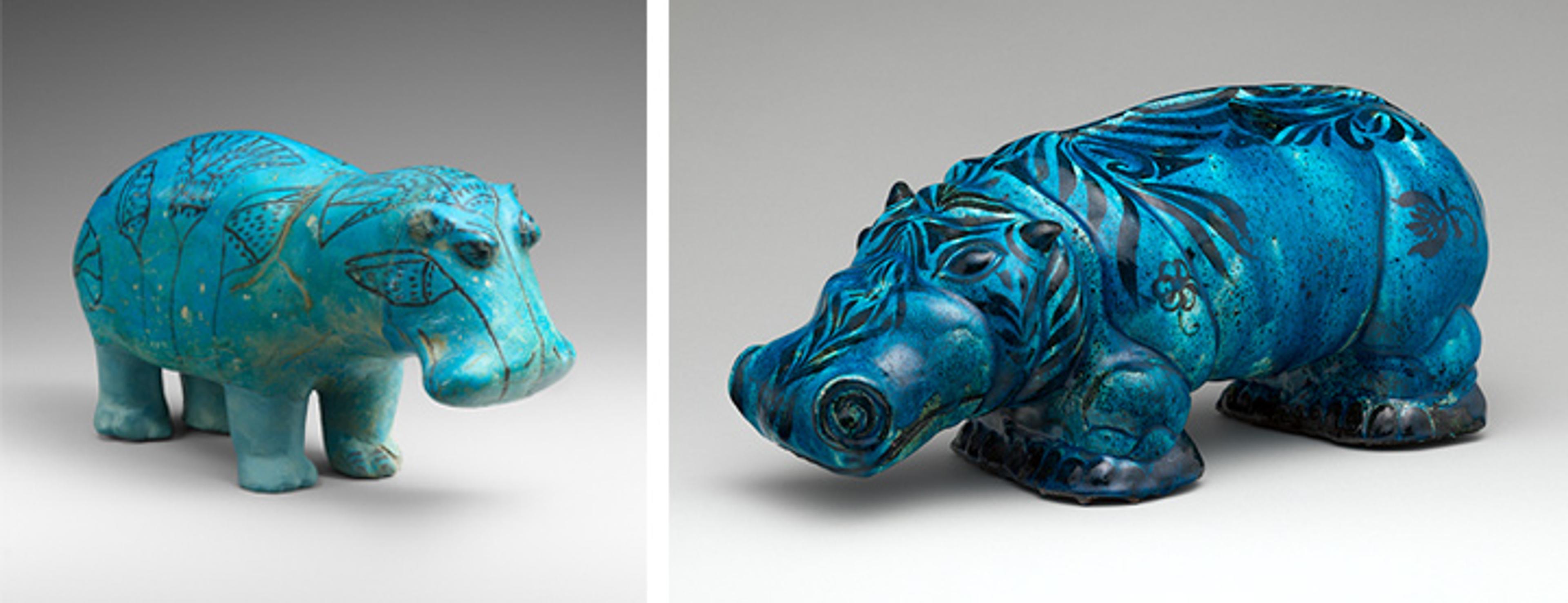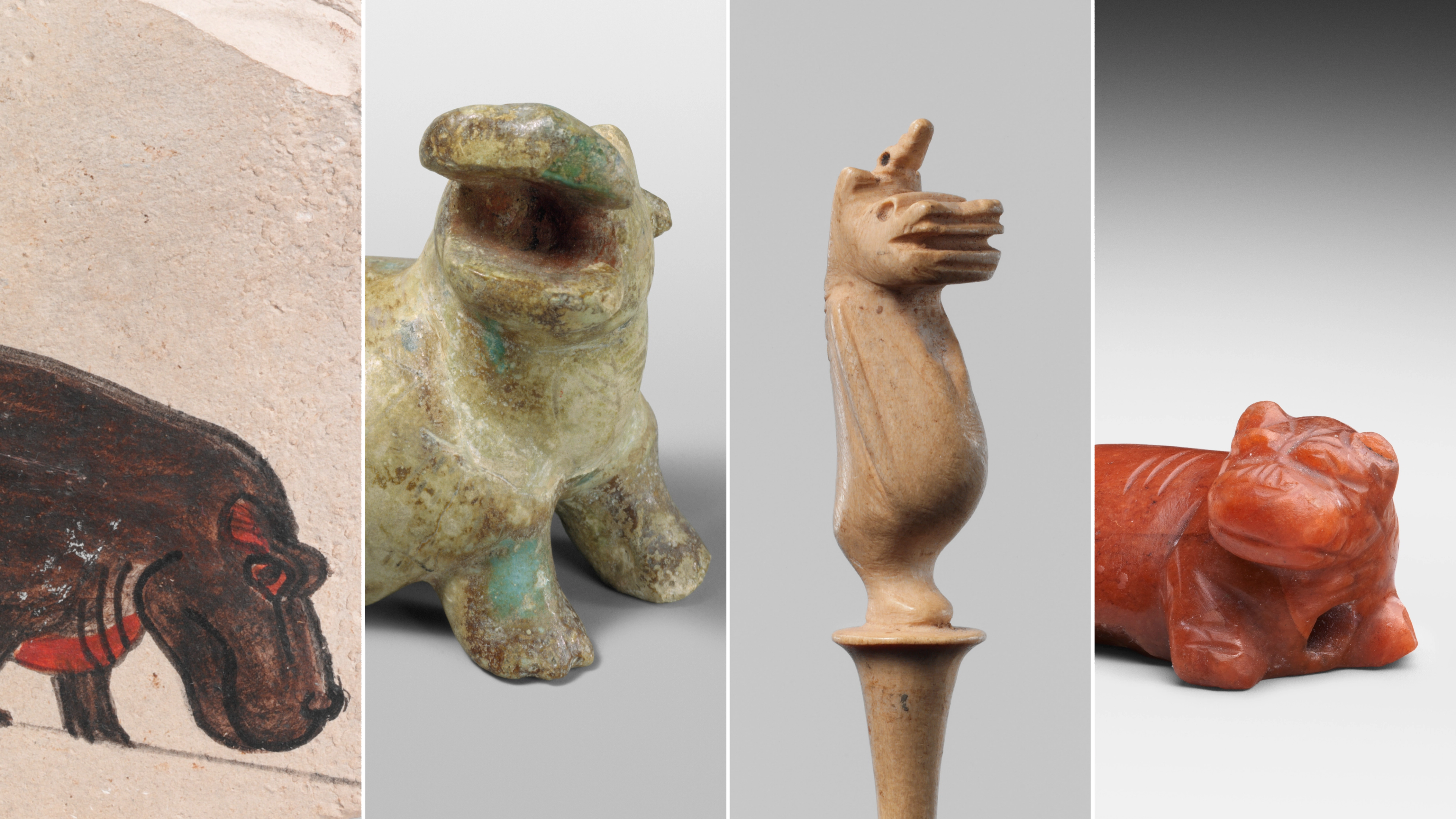A real hippopotamus can weigh as much as 8,000 pounds, or four tons (about 3,600 kg, or 3.6 tonnes). There aren't any living hippos at The Met, but there are tons of very small hippos made by ancient Egyptians!

Details of ancient Egyptian hippos in The Met collection
Did you know that you don't have to visit the Museum to get to know these hippos? That's right, you can find them in The Met collection online. Use the clues below and meet four tiny hippos today!
Hippo fact
Hippopotamus in Greek means "river horse," but hippos are more closely related to whales.
Hippo painting
Find the “hippopotamus painting” on The Met Collection page that matches the clue below.
Artwork clue
This hippopotamus painted on a piece of limestone is different from the other hippos you will discover today. The artist who made this painting chose to use natural colors. Real hippos are mainly grey or brown. They have red or pinkish skin on their bellies and around their eyes. When you find this painting of a hippopotamus, compare it to a photo of a real hippo. What else do you notice about the painting that looks realistic? What do you notice that's different?
You can see this artist's painting of a hippopotamus in Gallery 117.
Hippo fact
In ancient Egypt, hippos represented the positive qualities of life and regeneration, but they were also among the most dangerous animals.
Seated hippo
Find the “seated hippopotamus” on The Met Collection page that matches the clue below.
Artwork clue
What do you do when you are scared? When a hippo feels threatened, it roars or bares its teeth. It does this to intimidate or frighten its opponent. Imagine why this seated hippo opened its mouth.
Hippo fact
A hippo usually weighs 55–120 pounds (25–54 kg) when it's born. When a hippo submerges its entire head under water, its ears and nostrils close and a clear membrane covers its eyes, like goggles.
Hippo Godess Hairpin
Find a “hippopotamus goddess hairpin” on The Met Collection page that matches the clue below.
Artwork clue
The ancient Egyptians believed hippopotamus goddesses protected pregnant women and their babies from harm. They were often shown with pregnant bellies. On this tiny hairpin, you can even see the arms of the goddess surrounding her belly! And what is peeking above her head? It's a crocodile! How might the qualities of hippo and crocodile help make this goddess a good protector?
You can see the hairpin with a figure of a hippopotamus in Gallery 111.
Hippo fact
A hippo spends most of the day submerged in the water to protect its sensitive skin from getting sunburned. If a hippo gets stuck out in the sun, its body secretes an oily red liquid that acts like sunscreen to protect its skin.
Red Hippo
Find the “red hippo” on The Met Collection page that matches the description below.
Artwork clue
Look closely to find a hippopotamus carved out of red jasper, a kind of stone. From head to tail, this hippo is shorter than a standard US paper clip. It has a hole running through it and may have been worn as a piece of jewelry or an amulet. An amulet is an object that was believed to magically transfer a particular power (such as protective or healing powers) to its wearer. Why would you choose to wear this hippo?
You can see the red hippopotamus in Gallery 111.
William the Hippo
Over the years, one special hippo, "William," has become the Museum’s unofficial mascot. This year we are celebrating the 100th anniversary of William's arrival at the Museum. Meet William and his American friend in the #MetKids blog post, Two Blue Hippos. Then, join the hippos in conversation in Gallery 107 through April 1, 2018.
William the Hippo is now on view in Gallery 111.

Hippopotamus ("William"), ca. 1961–1878 B.C. From Egypt, Meir, Tomb B3. Faience. L. 7 7/8 x W. 3 x H. 4 1/2 in. (20 x 7.5 x 11.2 cm). The Metropolitan Museum of Art, New York, Gift of Edward S. Harkness, 1917 (17.9.1). Right: Carl Walters (American, 1883–1955). Hippopotamus, 1936. Glazed earthenware. L. 18 1/8 x H 7 3/4 in. (46 x 19.7 cm). The Metropolitan Museum of Art, New York, Purchase, Friends of the American Wing Gift, 2017 (2017.134)
Discover artworks from around the world in a time-travel adventure every first and third Saturday of the month. Art Trek is a program for families with children ages 7–11 at The Met Fifth Avenue. It's free with Museum admission.
Visit #MetKids, a digital feature made for, with, and by kids! Discover fun facts about works of art, hop in our time machine, watch behind-the-scenes videos, and get ideas for your own creative projects.

